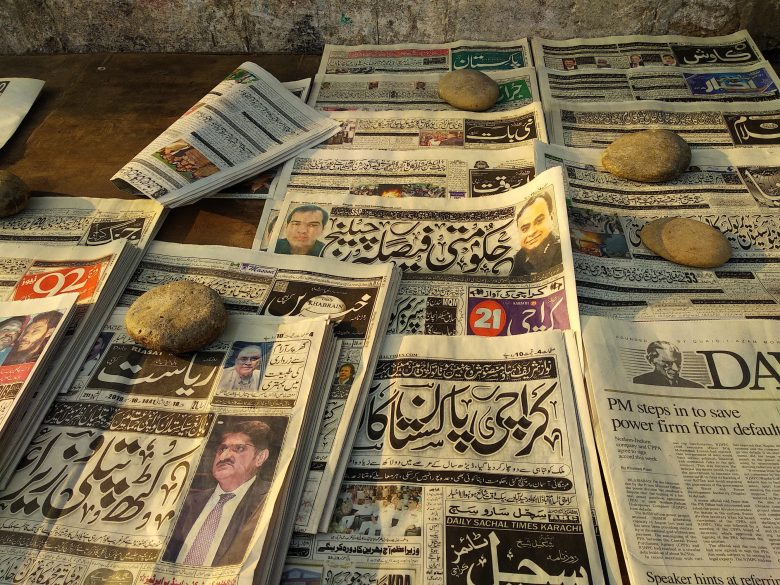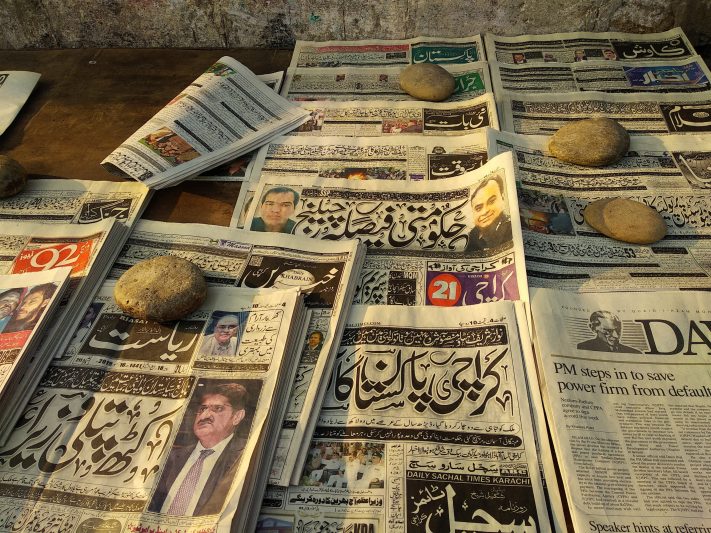By Anmol Irfan, freelance journalist and editor
In late April, a few months after Maryam Nawaz, daughter of ex-Pakistani Prime Minister Nawaz Sharif, was declared Chief Minister of Punjab, she was caught up in online controversy. While attending a passing out parade at the Police Training College in Chung, Nawaz wore a police uniform. The issue immediately started trending on social media, with many users questioning the logic behind her decision. A citizen named Waqar Alifiled filed a case against her.
Despite the Punjab Police releasing a statement supporting her decision and even appreciating it, media attention around it took a while to die down. But this isn’t new for Nawaz. Throughout her time in the spotlight, which has been significant given her father’s long political career and her very public role by his side, Nawaz had constantly been criticised for her clothing.

The controversy continued when senior minister Azma Bukhari stated that the Chief Minister only wears everyday clothes that cost from Rs 600-800, which led to online users taking pictures of her outfits and finding out prices to post online.
Critics of this kind of trolling often call out such behaviour as being misogynistic, saying that male politicians hardly ever get the same flak for their clothes. On the other hand, there is an opposing viewpoint that Nawaz should be criticised and that calling that criticism misogyny is unfair.
But there’s no doubt that Pakistani media is misogynistic in its approach and that female politicians have a very different experience in the public eye. “For a long time women campaigning themselves was seen as wrong,” says Sameen A. Mohsin Ali, Assistant Professor of International Development at the University of Birmingham. “A lot of times, when women run (for office), such as Hina Rabbani Khar, the men of their family campaign and they don’t actually do it themselves. Which is why when women do something different it garners a certain kind of attention,” she said.
The case of Suriya Bibi
With the case of Suriya Bibi, who made history in the latest election by becoming the first woman to be elected in a general seat in Chitral, it’s becoming increasingly clear that the intersection of privilege and class with gender cannot be ignored.
These overlapping identities and experiences play a major role in how women are treated in Pakistani media. Mohsin Ali says that the reason Bibi’s case has been different – and as many viewers would say, more positive – is that the media is mostly aware that women in politics are either coming in through the quota system or from dynastic families. The dominance of men in mainstream media also adds to the gendered way in which women are covered.
Despite the fact that many would say Suriya Bibi’s coverage was not as problematic as others, there is still a focus on her identity as a woman. She was given the symbol of a hen, which opponents used to criticise her and link to women’s domestic roles.
In the face of that criticism, Bibi told VOA in a phone interview, that there was no shame in poultry farming and rejected the attempt to diminish her worth based on her election symbol. But other than the occasional comment, Bibi has been relatively absent from social media – which is a stark contrast to the ever online media campaigns of other female politicians. That might also have something to do with why their coverage differs, after all, the more a woman is in the public eye in Pakistan, the more criticism she gets.
That also indicates that media coverage is shaped by both the people who work in the media and the people who consume it.
Women in politics and the media
Women in politics has always had an interesting history in Pakistan. “I think no one would deny that there’s a difference in the way men and women are treated in politics. Look at Maryam Nawaz versus Nawaz Sharif. If they want to insult Nawaz Sharif, they’ll say something derogatory about his daughter,” says Zainab Hussain, managing editor of Soch Fact Check.
Gendered political disinformation is also a major issue. Hussain adds that there’s a specific phenomenon in the media when it comes to covering women in politics which adds to stereotypes. “It’s what l like to call the Benazir Bhutto blueprint. She had a certain look about her, had a husband, and had a dupatta in a certain place,” she says, adding that anything that differs from that blueprint is considered unacceptable.
But while these issues may be common, it doesn’t absolve readers and viewers from their responsibility to forward authentic information or not be part of this vicious cycle. Digital Rights Foundation started their Gendered Political Disinformation Tipline where users can submit examples of disinformation so it can be researched and debunked. It also helps train their systems to recognize gendered political disinformation within Pakistan’s specific cultural context.
“Our job as viewers is to understand where the criticism is coming from. Is it a good faith argument, or just based on their gender?” Mohsin Ali says.
It’s crucial that viewers start taking a more active role in the information they are forwarding and consuming. It’s easy to blame media channels, and a lot harder to take responsibility for the fact that we as viewers often create the demand for certain content.
Pictures from shutterstock.com
Disclaimer:
The views and opinions expressed in this article are solely those of the author and do not reflect the official policy or position of the Media Diversity Institute. Any question or comment should be addressed to [email protected]

